This basil pesto pasta recipe is one of those comfort food dishes I come back to again and again. Made with homemade orecchiette pasta and a garlicky basil pesto, it’s flavorful and comforting, yet simple to prepare. I top it off with creamy burrata, lemon zest, and crispy breadcrumbs for an extra special touch, making it perfect for weekend dinners or when I’m cooking for friends.
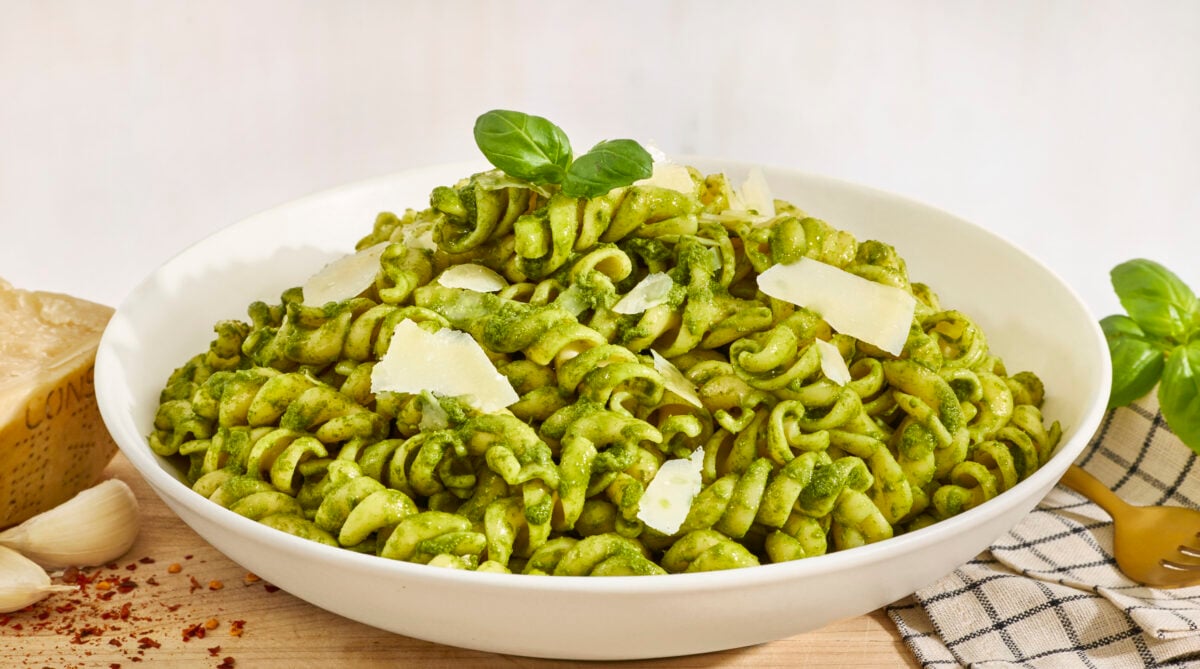
Pesto pasta is the dish that made me fall in love with cooking. Making pesto pasta from scratch may sound intimidating, but this version is all about slowing down and savoring the process. The handmade pasta gives the sauce something to cling to, while the roasted garlic and blanched basil create a silky, rich pesto that’s bright green and bursting with herbaceous flavor. The finished result elevates simple ingredients in the best way, creating the kind of recipe that feels like a special occasion, even if it’s just a cozy night in.
Ingredients and Notes
See the recipe card below for the complete ingredients list and instructions.
Pasta
- Flour – I use a combination of semolina (or semolina rimacinata) and 00 flour. The semolina adds chewiness, and 00 flour creates a silky pasta dough. That said, if you can’t find 00 flour, all-purpose flour will work just fine.
- Water – This helps combine the flour, creating a pliable dough.
Basil Pesto
- Olive Oil – Make sure to choose an olive oil that you enjoy the taste of on its own. Bitter oil can ruin your pesto.
- Garlic – I use a whole head of garlic and roast it in the oven to enhance the flavor, creating a sweet, pungent taste. I sometimes add in raw, shaved garlic, too, for a contrast of sweet, caramelized, and more bitter flavors. It’s optional, but it can add a nice touch.
- Kosher Salt and Pepper – Adjust to taste.
- Pine Nuts – I recommend using toasted pine nuts in place of plain pine nuts for more depth and a nutty, almost smoky flavor.
- Fresh Basil – Look for bright green leaves that are free from any discoloration. I always remove the stems before creating my pesto for a slightly smoother consistency.
- Parmesan Cheese – For the best taste, buy a block of Parmesan and grate it yourself.
Breadcrumb Topping
- Oil – Again, use a high-quality olive oil with a flavor you enjoy on its own.
- Panko Breadcrumbs – I prefer to use panko breadcrumbs over regular breadcrumbs because they’re slightly lighter, which allows me to create an extra crispy topping that doesn’t weigh the pasta down.
How to Make Basil Pesto Pasta
1. Make the Pasta
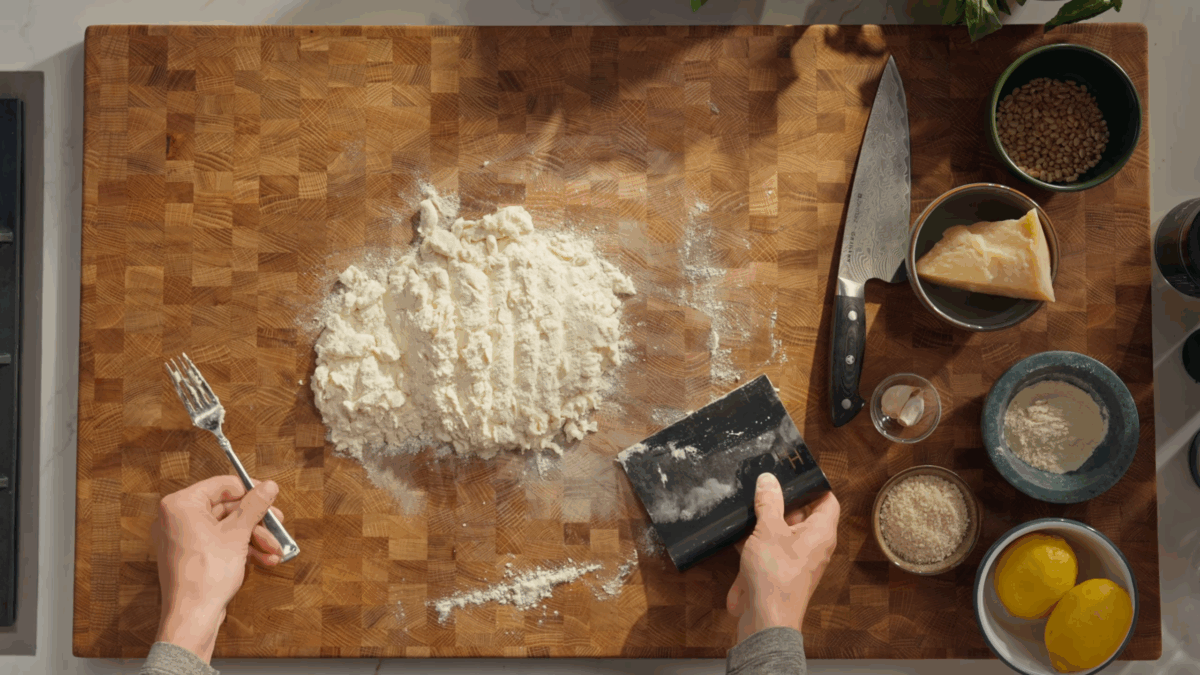
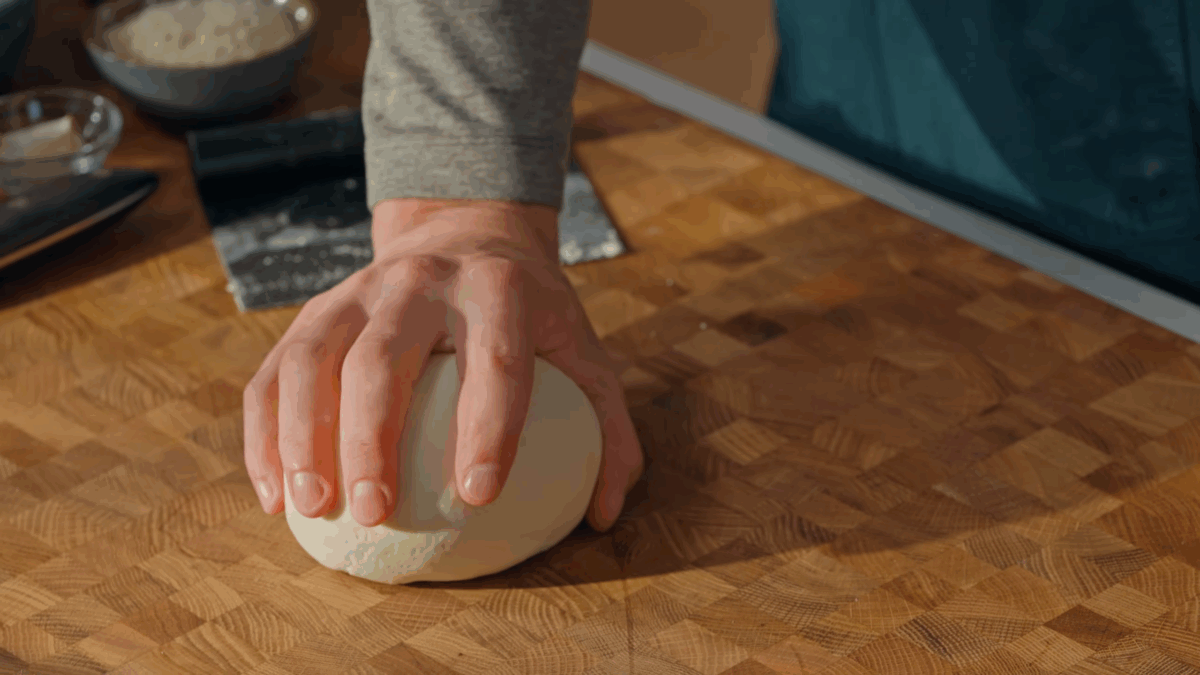
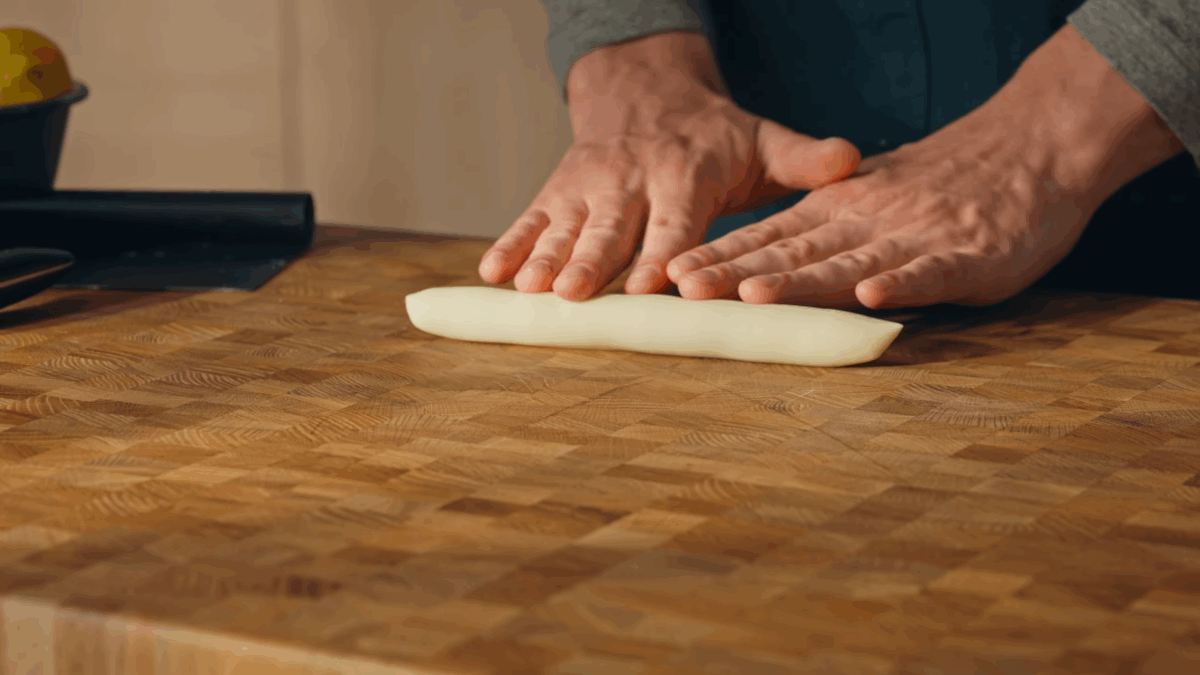
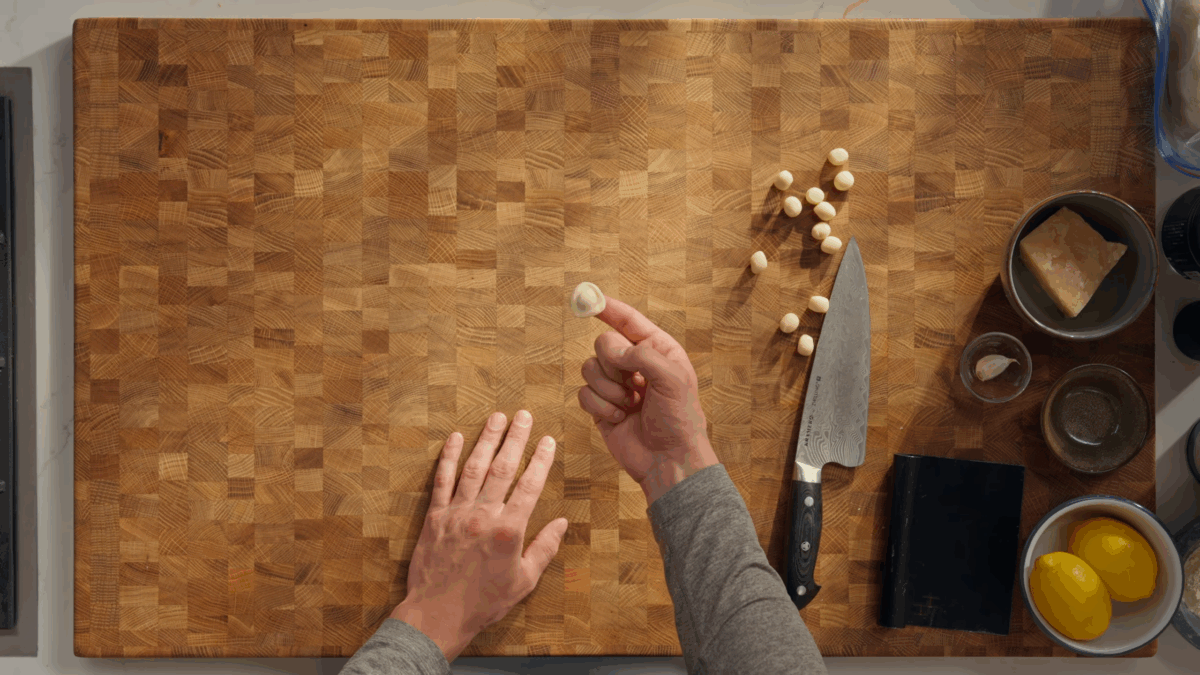
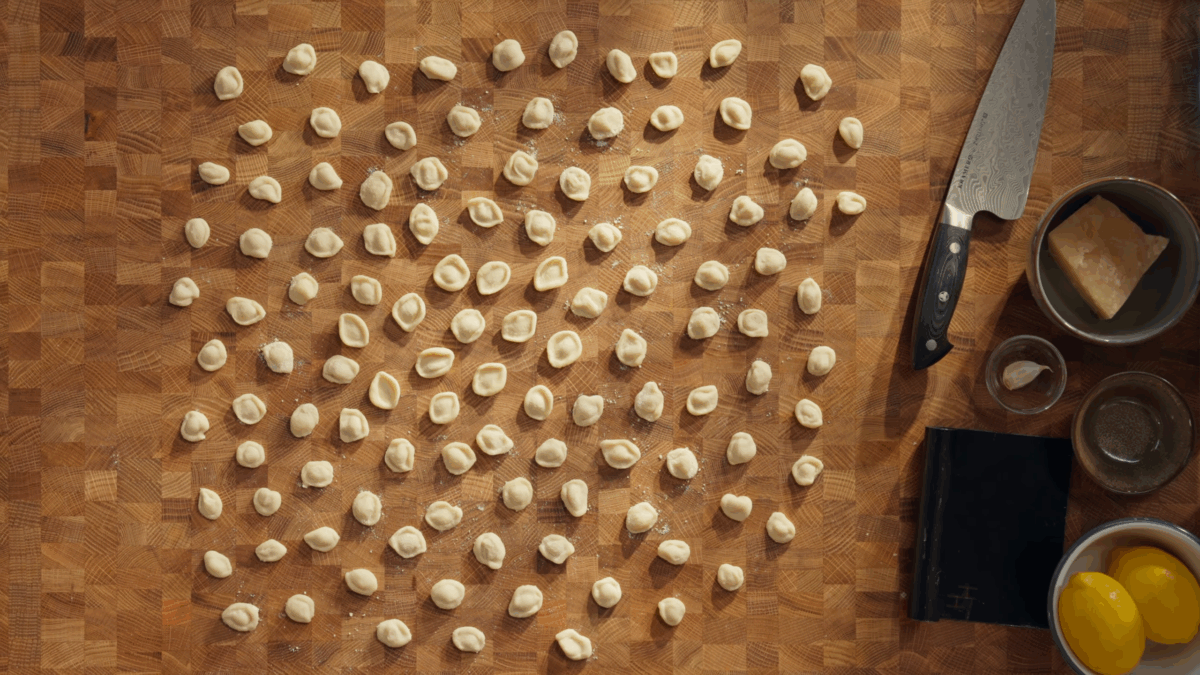
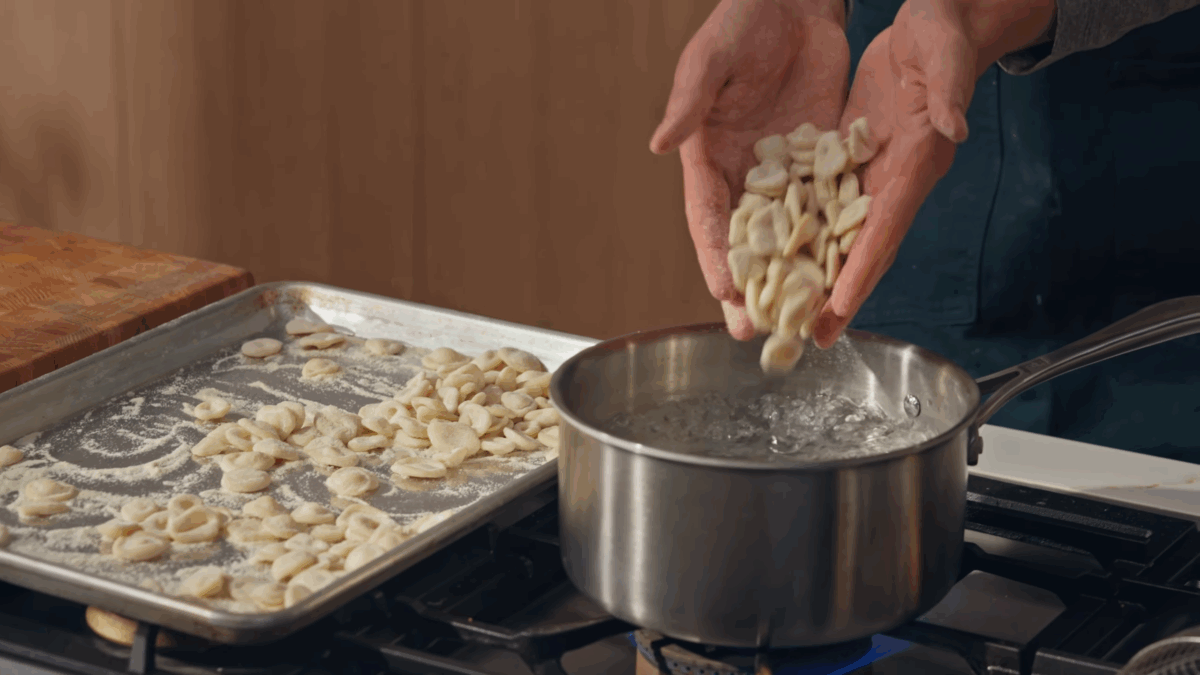
2. Prepare the Pesto

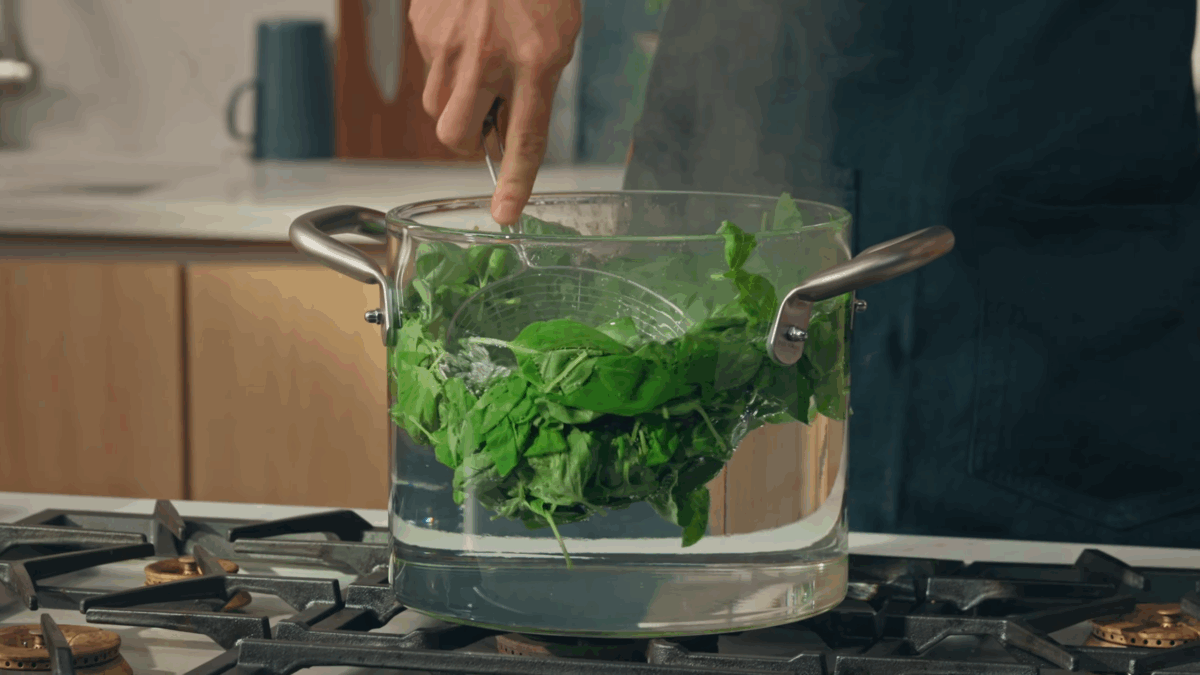
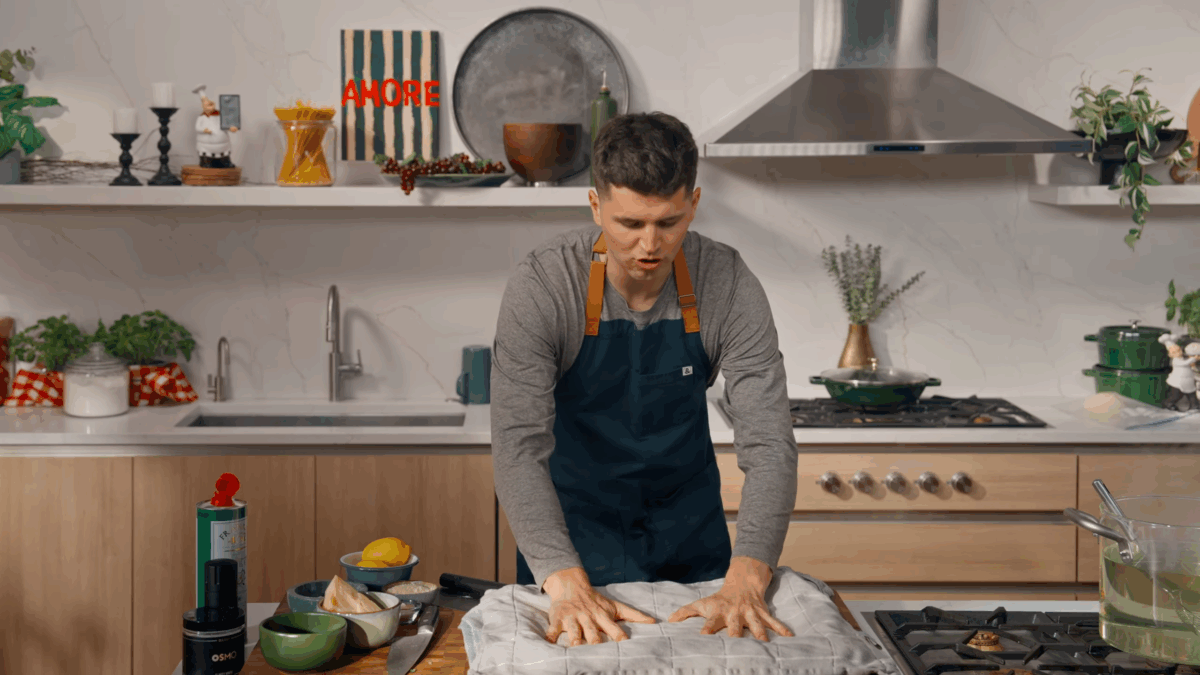
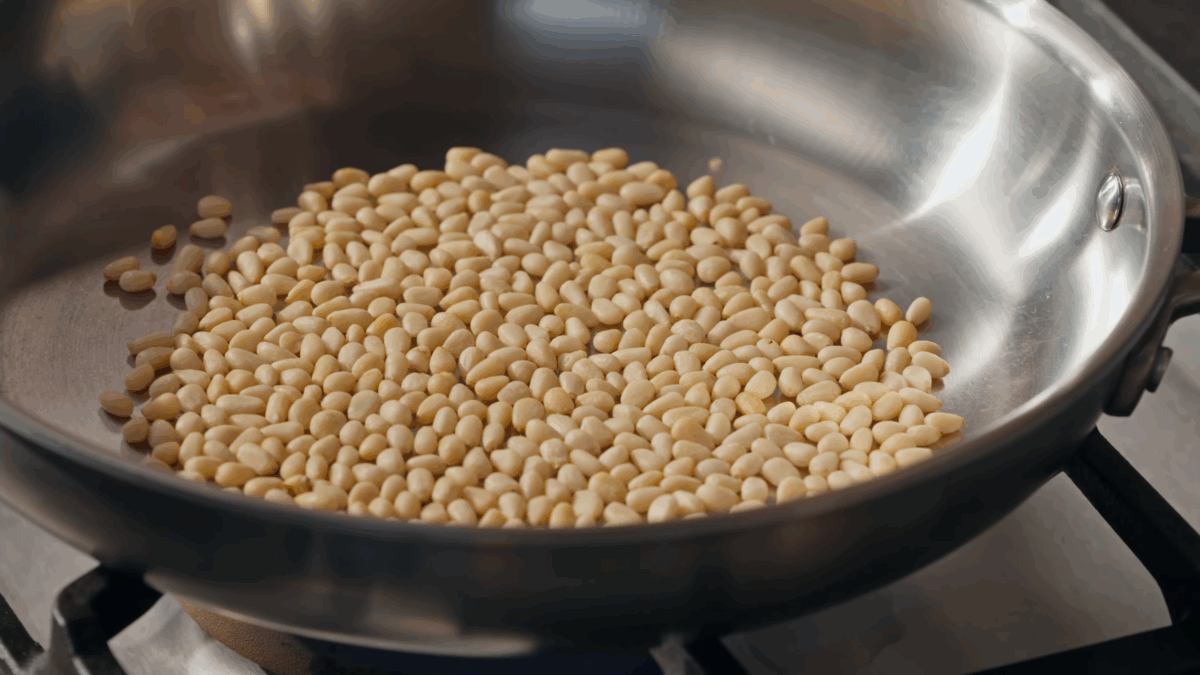
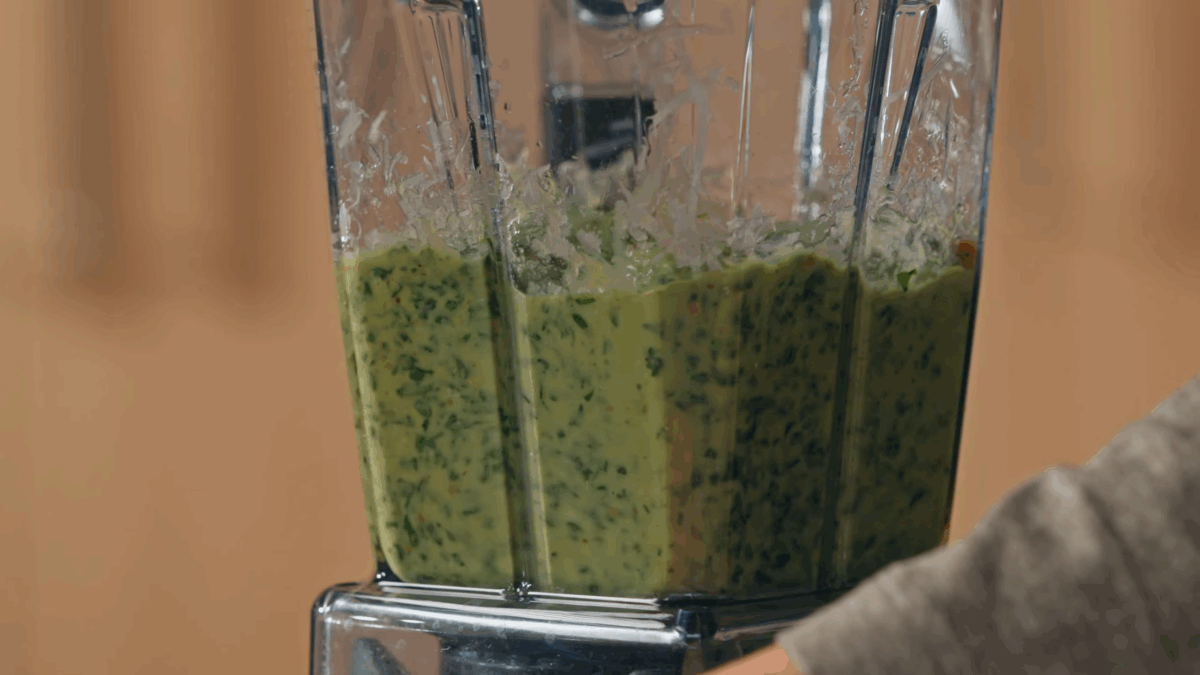
3. Make the Breadcrumbs and Assemble the Pasta
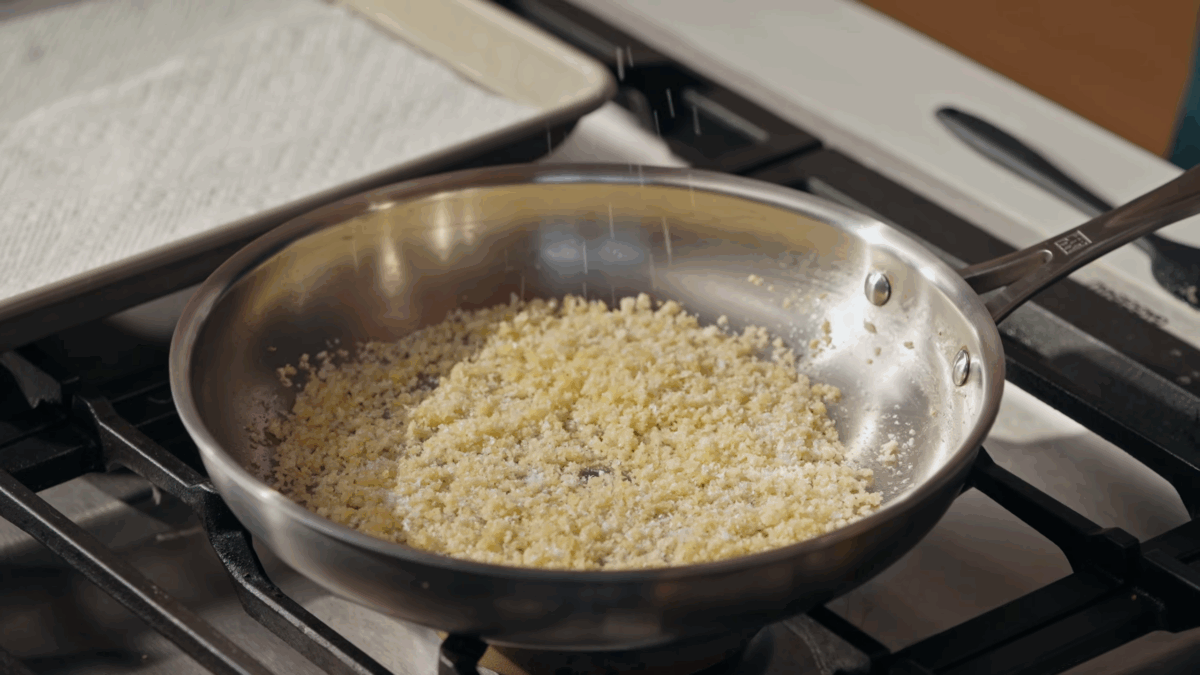
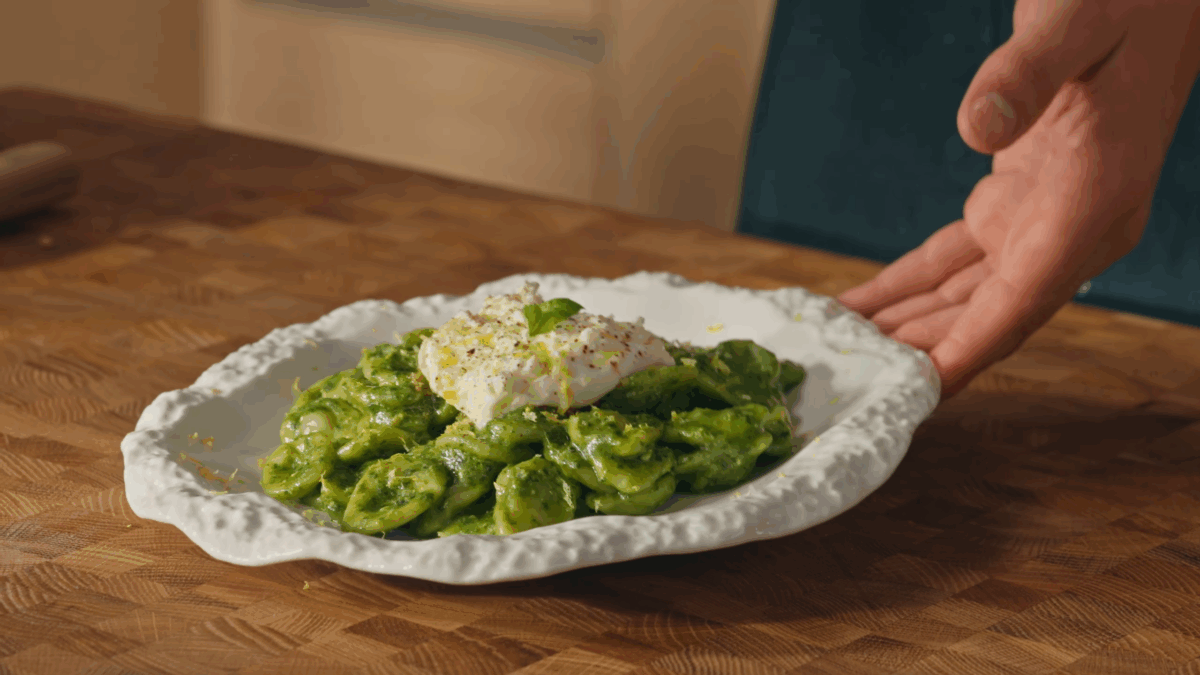
Nick’s Tips for Success
- Don’t skip resting the pasta dough! This allows the gluten to relax, which makes it easier to shape and prevents it from being tough.
- Avoid overcooking the pasta. Drain the water as soon as you see the orecchiette pieces begin to float. Cooking any further will cause the pasta to become mushy, and it won’t hold up to the weight of the pesto well.
- Don’t rush the roasting process. The key to beautifully caramelized garlic is slow roasting, which draws out the natural sugars for a sweet, rich flavor.
- Avoid overblending the pesto. Pulse just until the ingredients combine, but not so much that a puree forms.
- Keep an eye on the stove while toasting. Both pine nuts and breadcrumbs can go from perfectly toasted to burnt in seconds. So, keep a close eye on the stove, and remove them from the heat as soon as they’re lightly golden.
Possible Variations
- Swap the basil – Replace some or all of the basil with spinach, arugula, or parsley.
- Pine nuts – Use walnuts, almonds, or pistachios for a slightly different taste.
- Creamy – Add a spoonful of ricotta or Greek yogurt for a thicker, creamier texture and richer flavor.
- Cheese – Swap the burrata for ricotta, goat cheese, or mozzarella pearls.
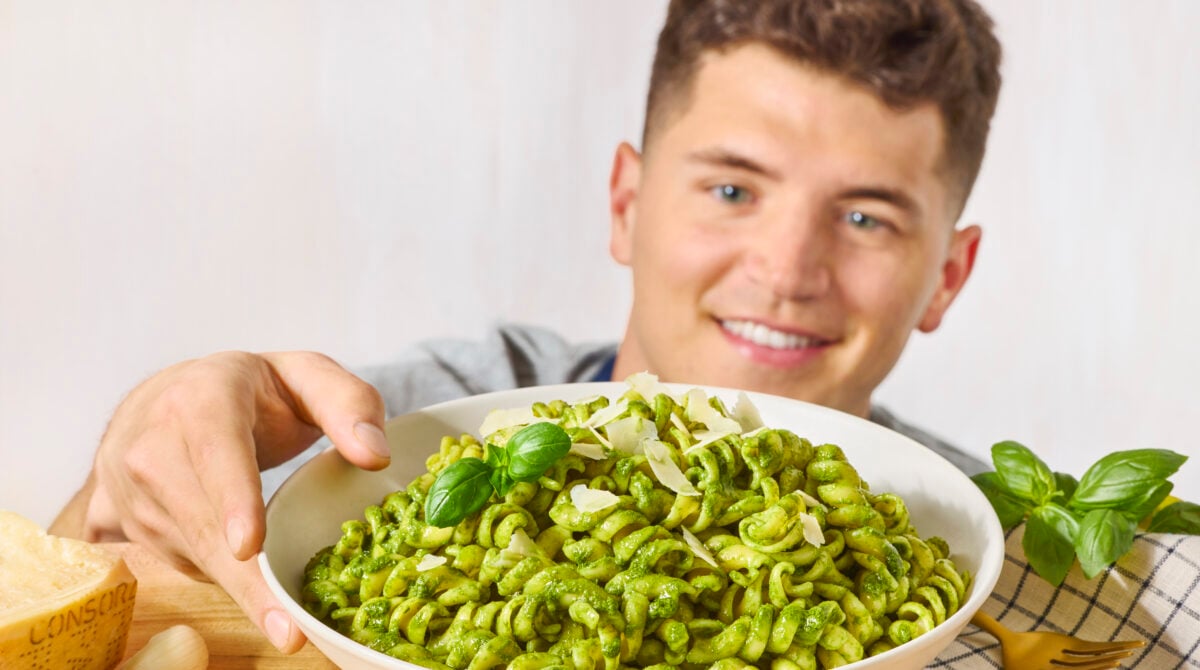
Basil Pesto Pasta Recipe
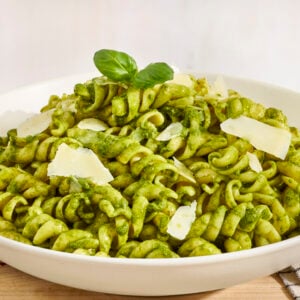
Equipment
- 1 Fork or Bench Scraper
- 1 Plastic Bag
- 1 Butter Knife
- 1 Sheet Pan
- 1 Large Pot
- 1 Large Sheet Tray
- 2 Large Pots
- 1 Colander
- 1 small baking dish
- 1 Medium Mixing Bowl
- Tea Towels
- 1 Food Processor or Blender
- 1 Medium Skillet
Ingredients
For the Pasta
- 200 gram (1 1/3 cup) semolina or semolina rimacinata, plus more for dusting
- 200 gram (1 1/3 cup) 00 flour*
- 190 gram (2/3 cup) warm water, plus more if needed
For the Pesto
- 1 head garlic, plus two small cloves
- 1 cup (218 gram) olive oil
- kosher salt, to taste
- 6 (2 ounce containers / 200 gram) containers fresh basil leaves
- ⅓ cup (47 gram) pine nuts, toasted (*see notes)
- ½ cup (50 gram) Parmesan cheese, freshly grated
- black pepper, to taste
For the Crispy Breadcrumbs
- 1 tablespoon (14 gram) olive oil
- ⅓ cup (17 gram) panko breadcrumbs
- kosher salt
- black pepper, freshly cracked
For Serving
- burrata
- olive oil
- black pepper
- Parmesan cheese, freshly grated
- lemon zest
Instructions
For the Pasta
- Add the semolina and 00 flour to a clean work surface. Mix with your hands to combine the two, then create a large well in the center.200 gram semolina or semolina rimacinata, 200 gram 00 flour*
- Add the warm water to the well, and use a fork to pull the flour into the water. Once you have trouble incorporating it with the fork, switch to a bench scraper or your hands, and gently combine until you have a cohesive dough. If more water is needed, add one tablespoon of water at a time as the dough is coming together.190 gram warm water
- Knead the dough with the heel of your hand for five minutes, or until the dough is soft and smooth on the surface.
- Place in a plastic bag, and let it sit at room temperature for 20 minutes.
- Sprinkle a good amount of semolina onto a sheet tray.
- Cut off a section of dough, about one to one and a half inches wide. Cover the rest of the dough.
- Roll the dough into a half-inch thick rope. Start in the center, and use your fingers or the palms of your hands to roll the dough, first back and forth, until the surface is smooth, and then outward in opposite directions, eventually making your way toward the ends.
- Cut the rope into roughly half-inch pieces.
- Place a piece of dough on your work surface. Then, use the serrated edge of a butter knife to firmly drag the dough toward or away from you, tilting the blade downward into the dough at a 30 to 45-degree angle, until the dough curls over on itself.
- Peel the curled edges apart with your fingers, and invert the dough over your thumb to expose the rough interior, stretching it a little into a small dome.
- Arrange the finished orecchiette, rough side up, in a single layer on the prepared sheet pan. Repeat with the remaining pieces, and then the remaining dough.
- If possible, let the pasta dry for an hour, but no longer than five hours, before cooking.
- Bring a large pot of water to a boil. Season assertively with salt. Then, add the orecchiette. Cook for about three minutes, or until the pasta floats to the surface and is al dente.
For the Pesto
- Preheat the oven to 400°F (204°C).
- Cut the top fourth off the head of garlic. Add it to a small baking dish, then cover with the olive oil. Season with salt.1 cup olive oil, 1 head garlic, kosher salt
- Bake for 45-60 minutes, or until the garlic is soft all of the way through.
- Remove from the oven, and let the garlic and oil cool to room temperature.
- Bring a large pot of water to a boil and season with salt.
- In a medium mixing bowl, add ice and cold water to create an ice bath for the basil.
- Add the basil to the boiling water and blanch for 15 seconds, or until the basil has softened and turned bright green.6 (2 ounce containers / 200 gram) containers fresh basil leaves
- Remove the basil and transfer it to the ice bath. Once the basil is cool to the touch, remove it from the ice bath and place it on a tea towel. Firmly press to remove any excess water from the basil.
- Remove the cooled garlic head from the oil and squeeze the base of the garlic head to extract the garlic into a food processor or blender. Then, add the remaining two raw garlic cloves, toasted pine nuts, blanched basil, Parmesan cheese, salt, pepper, and any oil from the roasted garlic. Blend until the desired consistency is achieved.⅓ cup pine nuts, toasted (*see notes), ½ cup Parmesan cheese, black pepper
For the Crispy Breadcrumbs
- Heat olive oil in a skillet over medium heat. Add the breadcrumbs, and season with salt and ground black pepper.1 tablespoon olive oil, ⅓ cup panko breadcrumbs, black pepper, kosher salt
- Stir to combine, and sauté over low heat until the breadcrumbs turn a golden-brown color.
- Transfer the breadcrumbs to a paper towel-lined sheet pan or plate to cool, spreading them out in an even layer to drain some of the excess oil.
For Plating
- Toss the cooked pasta with the prepared pesto. Then, place a generous amount of pesto pasta in a shallow bowl, and add a nest of crispy breadcrumbs on top. Finish with fresh, torn burrata, salt, freshly ground black pepper, a drizzle of olive oil, and lemon zest, as desired. Top with fresh basil, and serve warm or at room temperature.burrata, olive oil, black pepper, Parmesan cheese, lemon zest
Video

Notes
- *If you can’t find 00 flour, all-purpose flour will also work.
- *Toasting Pine Nuts: To toast the pine nuts, add them to a dry skillet on the stovetop over medium-low heat. Cook, stirring frequently, just until they’re golden brown and fragrant. Do not walk away from the stove, as pine nuts can burn in a matter of seconds. The total toasting time will take about three to five minutes. Once they’re toasted, transfer the pine nuts to a small bowl to stop the cooking process, and set them aside to cool slightly.
- Storage: This dish is best served fresh. However, you can transfer leftovers to an airtight container and store them in the refrigerator for up to three days. To serve, reheat gently in the microwave or in a skillet on the stove over medium heat.
Nutrition
Nutrition information is automatically calculated, so should only be used as an approximation.
 Like this recipe? Rate & comment below!
Like this recipe? Rate & comment below!Frequently Asked Questions
I like to serve this pasta as a side dish with main courses like my whole roasted chicken, buttermilk fried chicken, and reverse-seared steak. However, it can easily be turned into a main course with the addition of shredded chicken, shrimp, fish, tofu, or tempeh.
I don’t recommend freezing this dish once combined. However, you can store the pesto for up to two to three months. I like to portion it into an ice cube tray and then transfer the ice cubes to a sealable bag for single-serving portions. When ready to use, I thaw a few cubes in the fridge, and they taste as good as new.
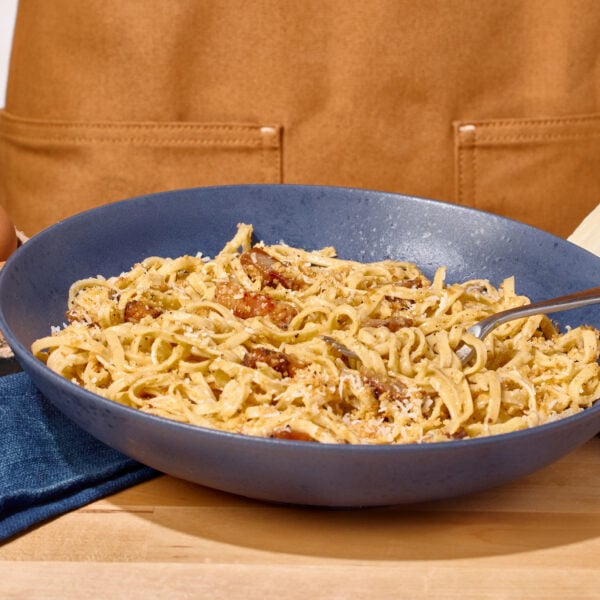
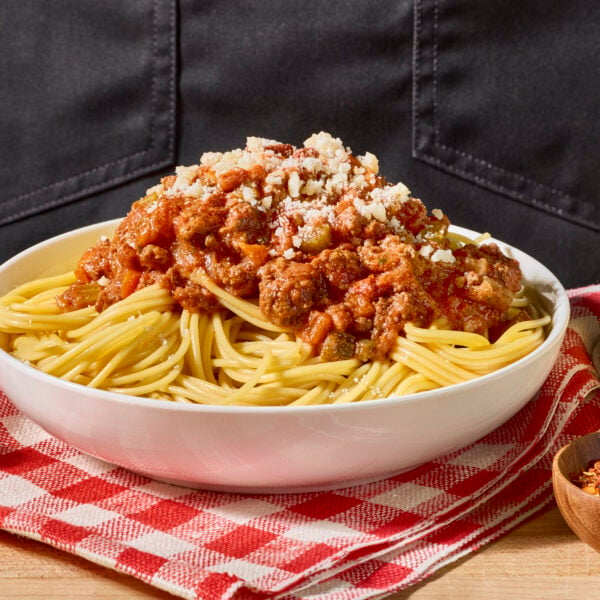
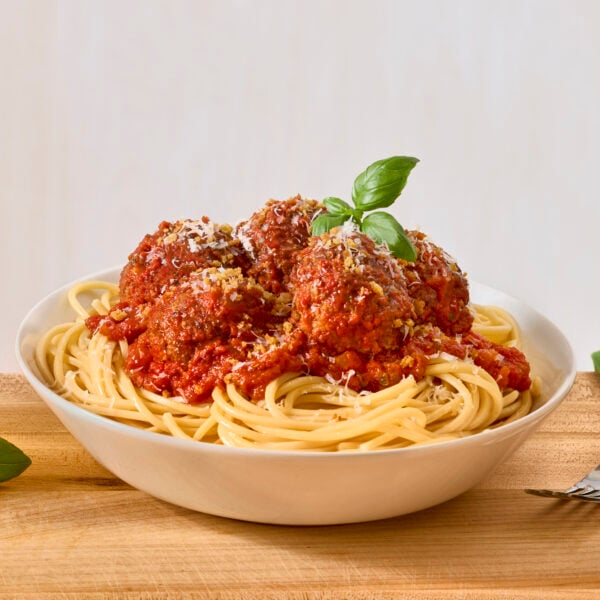

We just made this recipe, pasta and all with my Girl Scout troop! All of them loved it, even the picky eaters!! This was such a fun and delicious recipe! I know they are going to request making this again! Thank you so much for your accessible recipes! We watched the video, read a print out of the recipe and then jumped in. What a blast!
Thanks for the kind comment Andrea, our pleasure!
best pesto I’ve ever had! I love how you were able to find ways to get as much flavor out of every single ingredient. I’ve been making this weekly
This recipe is so good! Only thing I don’t add are the extra bits of garlic.
10/10 dish, my family loved it!
It’s delicious, creamy and tasty! I beated a member of my family in a cook off competition using this recipe
Made it, loved it
Amazing recipe nick keep up the good work!!